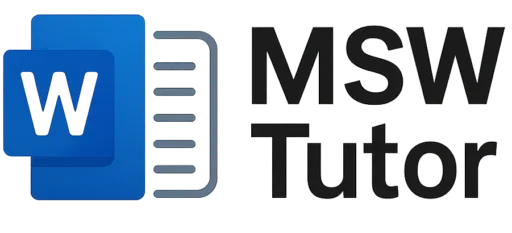Do you often find yourself stuck copying and pasting the same data into Word documents? Or maybe you spend hours updating the same template to make different reports. If this sounds familiar, XML (Extensible Markup Language) can save you a lot of time and effort. By using XML data for creating dynamic Word documents, you can easily create dynamic Word documents that change automatically as your data changes.
You might also want to check out our guide on editing invoice templates in Microsoft Word to learn more about customizing templates. For example, XML can help you quickly update customer information in multiple documents. In this blog post, we’ll show you how to use XML data to make dynamic Word documents in just five simple steps. Let’s get started!
Why Use XML Data for Dynamic Word Documents?
XML Data for Creating Dynamic Word Documents is a powerful way to store and share data. When you combine XML with Microsoft Word, you can create automated, data-driven documents without lots of manual work. If you’re interested in making your Word documents even more versatile, consider learning how to create a booklet template in Microsoft Word. Whether you need to create personalized reports, invoices, or contracts, using XML with Word can help you save time, avoid repetitive tasks, and reduce mistakes.
Here, we’ll explain everything you need to know about using XML Data for Creating Dynamic Word Documents easily.
Step 1: Understand the Basics of XML and Word Integration
Before we dive into the steps, it’s important to understand how XML and Word work together. XML is used to organize data in a standard way, while Microsoft Word provides the visual layout to show this data. XML lets you keep the content of your document separate from its design, which means you can use one template to create many documents with different content.
This setup is great for making documents that have similar layouts but different data, like customer details or statistics.
Step 2: Create an XML Data File
First, you need to create an XML file that contains the data you want to use in your Word document. You can create an XML file using a simple text editor like Notepad. Save the file with the extension ‘.xml’. This file usually has tags that define different pieces of data. For example, an XML file for an invoice might have tags like <CustomerName>, <InvoiceNumber>, and <TotalAmount>. This makes it easy to find and use data in the Word document.
Here’s what a simple XML data file might look like:
<Invoice>
<CustomerName>John Doe</CustomerName>
<InvoiceNumber>12345</InvoiceNumber>
<TotalAmount>500.00</TotalAmount>
</Invoice>Step 3: Prepare a Word Template with Content Controls
Once you have your XML data, you need to make a Word template to hold this data. In Microsoft Word, you do this using “Content Controls,” which are placeholders for data. You may also find it useful to explore customizing cover page templates in Microsoft Word to make your documents look even more professional. You can find these controls under the “Developer” tab in Word.
Add text boxes, drop-down lists, or repeating sections that will show information from the XML file. For example, you can add a content control for the customer name and link it directly to your XML data. This way, the Word document will automatically show the right information each time the data is updated.
Step 4: Link the XML Data to the Word Template
Next, you need to link your XML data to your Word template. This step is crucial because it lets Word automatically fill in fields with data from the XML file, saving you from typing it all manually. You do this by going to the “Developer” tab, selecting “XML Mapping Pane,” and adding your XML file.
The XML Mapping Pane lets you match the tags in your XML file with the content controls in your Word template, making XML Data for Creating Dynamic Word Documents a seamless process. Once linked, the Word document will pull in the data from the XML file and replace the placeholders with real information.
Step 5: Generate Dynamic Word Documents
After you set up the XML mapping, you can create your dynamic Word document. Whenever you update the XML file, the linked Word document will automatically update with the new data. This means creating new versions of your document is super quick and easy, saving you hours of work.
You can also save the document as a template (.dotx or .dotm) so you can reuse it, keeping a consistent design and making updates simple as your data changes.
Benefits of Using XML for Dynamic Documents
- Efficiency: Once set up, you can create dynamic documents in seconds.
- Accuracy: Reduces the risk of mistakes that happen with repetitive work.
- Scalability: Perfect for making multiple versions of the same document with different data.
Conclusion
Creating dynamic Word documents using XML Data for Creating Dynamic Word Documents is an easy way to make your workflow more efficient. For more details on using XML with Microsoft Word, check out Microsoft’s official guide on XML mapping. Whether you’re working with invoices, reports, or personalized letters, this method can save you time, reduce mistakes, and make document creation simpler. Start by making a template with content controls, link it to XML data, and watch as you effortlessly create dynamic documents with just a few clicks.
Ready to take control of your document creation? Try using XML integration today and see the convenience and power of automated, dynamic Word documents! For additional examples and resources, visit W3Schools XML Tutorial to learn more about working with XML data. Start with a simple template to practice, and soon you’ll be making complex documents with ease.
1 thought on “How to Use XML Data for Creating Dynamic Word Documents in 5 Simple Steps”
Comments are closed.


Pingback: Building Interactive Forms with Content Controls & XML Mapping in Word | MSW Tutor.